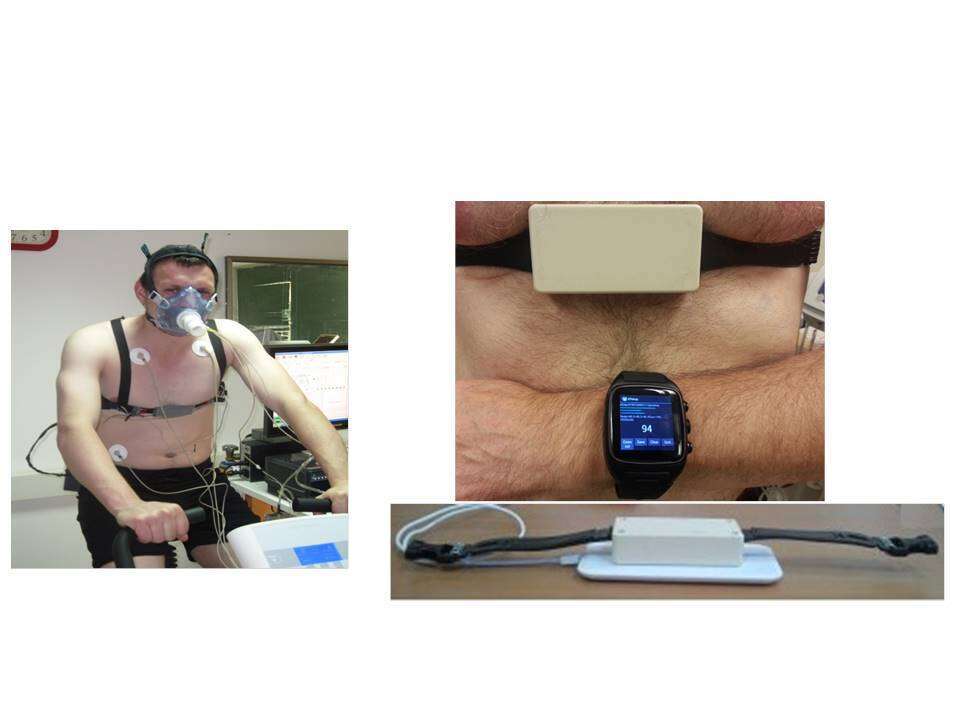Background: The anaerobic threshold (AT) is a fundamental physiologic measure to assess exercise intensity and to improve cardiorespiratory (aerobic) fitness by training. Currently, the principal methods for the detection of AT is performed in the laboratory and is limited to blood sampling (lactate measurement) or noninvasively using Cardio Pulmonary Exercise Testing (CPET).
Aim: To develop a new, non-invasive, non-laboratory device and method for the detection of the AT during exercise.
Methods: A prototype (figure 1, left) made of a stretch sensor, a vertical accelerometer, and a heart rate monitor was built as a chest belt to measure exercise intensity and the equivalent of pulmonary ventilation, all connected to data processing and logging unit. The stretch sensor measures breathing interval (corresponding to breathing frequency, BF) and the equivalent of tidal volume (TV, driven by thorax expansion), both generating pulmonary ventilation (VE). CPET was conducted while simultaneously using the AT-strap to compare between the two methods. An advanced AT-strap was designed to overcome prototype limitations and was tested while running. Results: Comparative experiments of AT determination with CPET were tested in N=10 normal healthy volunteers showing mean difference of 1.5 [W], LoA: (-14) - (17) [W], using Bland–Altman Analysis . The average deviation of time and load of the AT results between the AT-strap and the CPET was 0.6% and 1.4% for AT Heart Rate. The advanced AT-strap showed high performance in running test.
Conclusions: The new AT-strap successfully detects pulmonary attributes (BF, relative TV, and equivalent of VE) relevant for detecting AT noninvasively, in the field. High agreement was found between AT-strap and CPET results. Additional tests should be undertaken to successfully validate the agreement between both devices under a larger and more diverse individuals, athletes, and patients. The prototype strap during bicycling exercise. The new strap transmitting data to a smartwatch.

